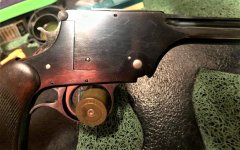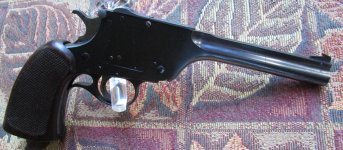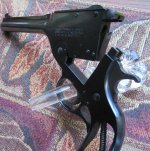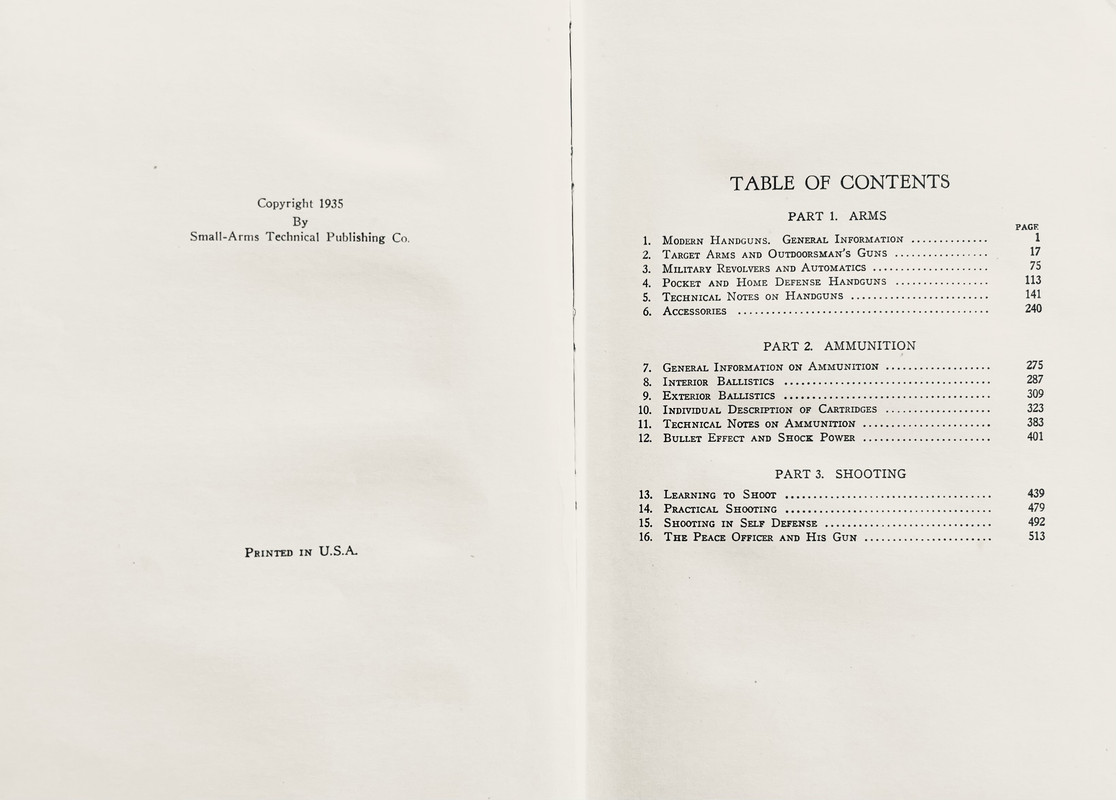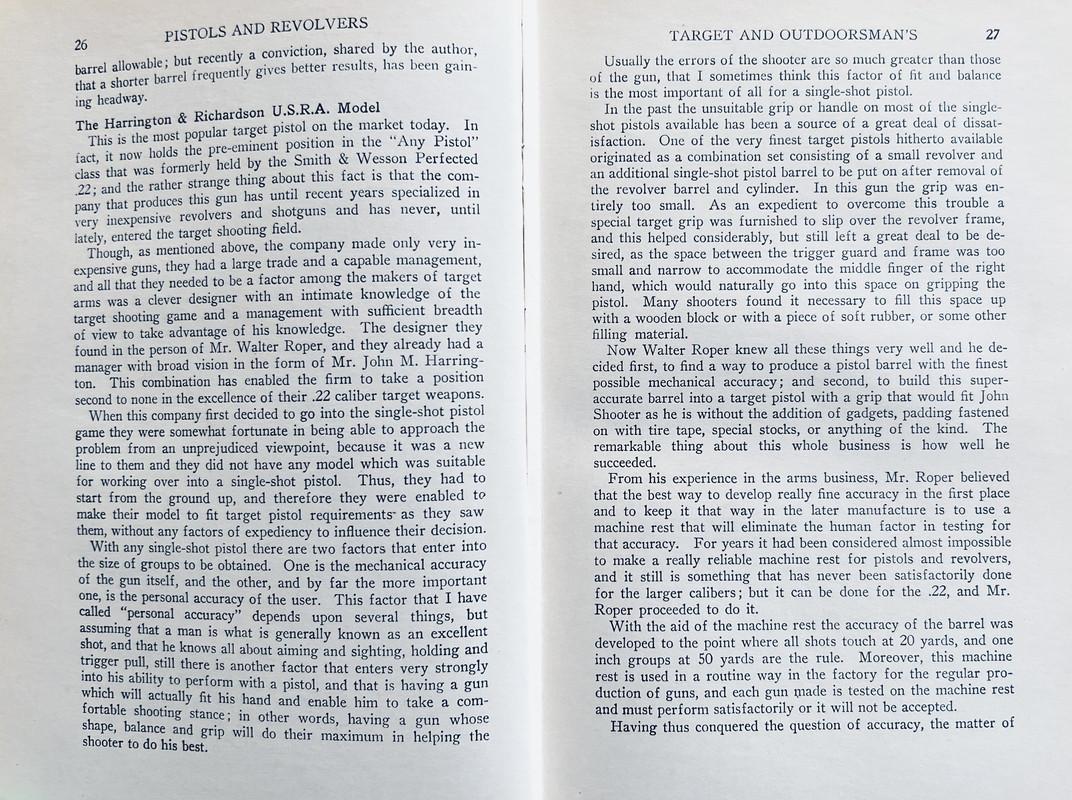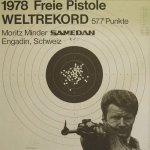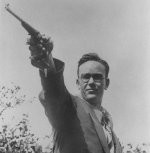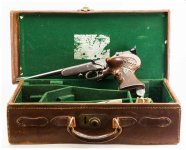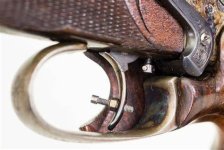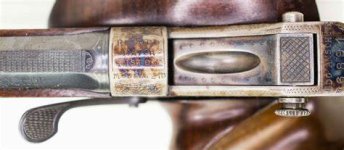Ive been looking to pick one up for awhile! Fantastic pieces all around.
You are using an out of date browser. It may not display this or other websites correctly.
You should upgrade or use an alternative browser.
You should upgrade or use an alternative browser.
Harrington & Richardson U.S.R.A. Model
- Thread starter bigl1911
- Start date
- Joined
- May 16, 2005
- Messages
- 15,416
- Reaction score
- 37,488
I, too, have acquired a Harrington & Richardson USRA (195) single-shot .22 target pistol, SN 2606, from Amoskeag auction house, which, per their write-up, below, is from Richard Littlefield's collection.
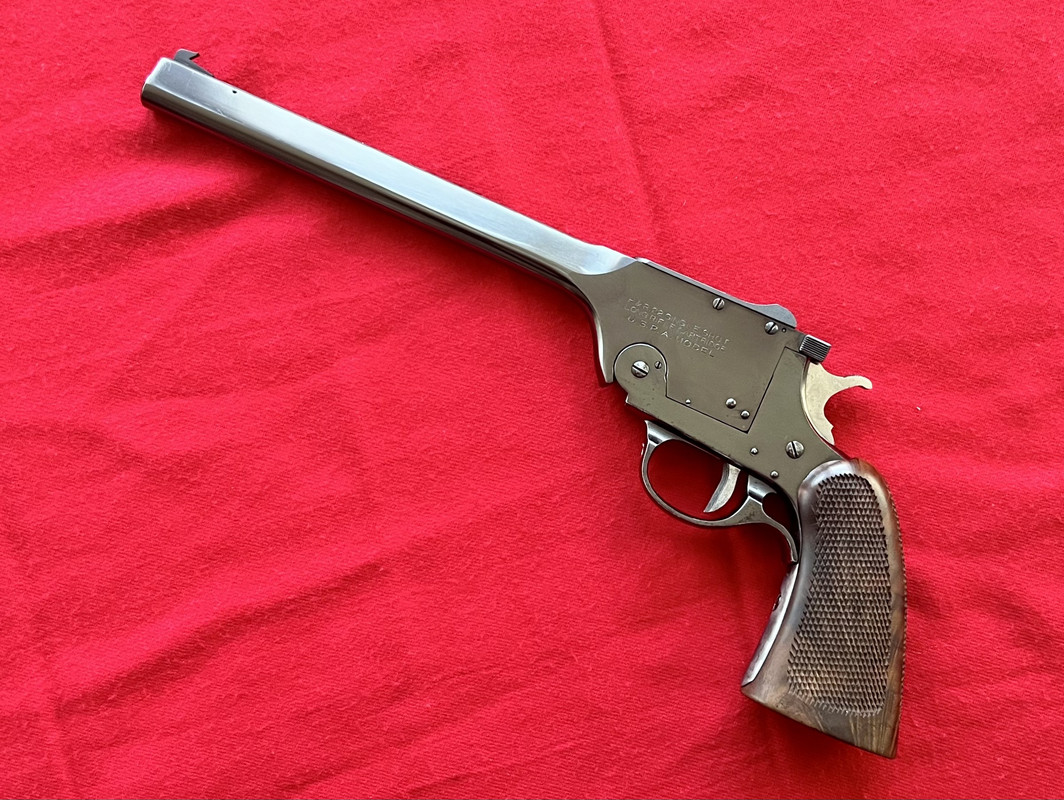


The late Richard Littlefield collected and researched the H&R USRA/195 extensively, and encouraged other collectors/owners to fill out a two-page survey on their gun's attributes in order for him to collect extensive information on the model. He had planned to write a book on the topic, but as far as I know he did not publish his research. I don't know if another collector now has his material.
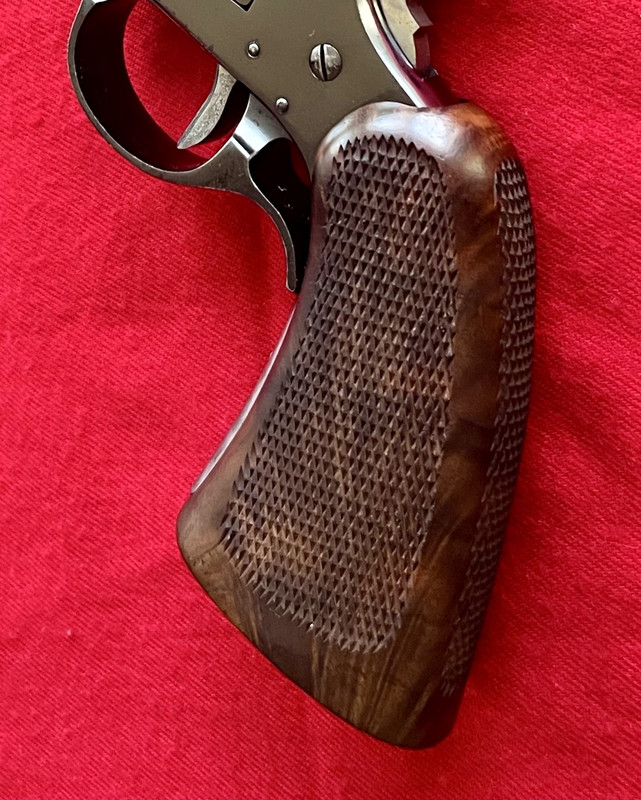
Per Sean McCarter in an OGCA video "H&R Outshoots Everyone Else," available on YouTube, H&R Outshoots Everyone Else! | Expert Interview (OGCA): Episode 4 | Sean McCarter - YouTube, H&R USRA SN 3320, accompanied by a test target dated 1940, represents the pinnacle of the USRA's development because it has the following late model features:
• Heaviest barrel (slabside, 10")
• Later adjustable trigger screw (on front of trigger guard)
• Evolved (straight) trigger
• Heavier/bigger hammer
• windage adjustment screws on both sides where indicated
• Roper adjustable rear sight designed for consistent shadow regardless of sunlight conditions
• Rear sight vertical adjustment screw in indicated position on top strap
• Four-position group height adjustment screw at muzzle
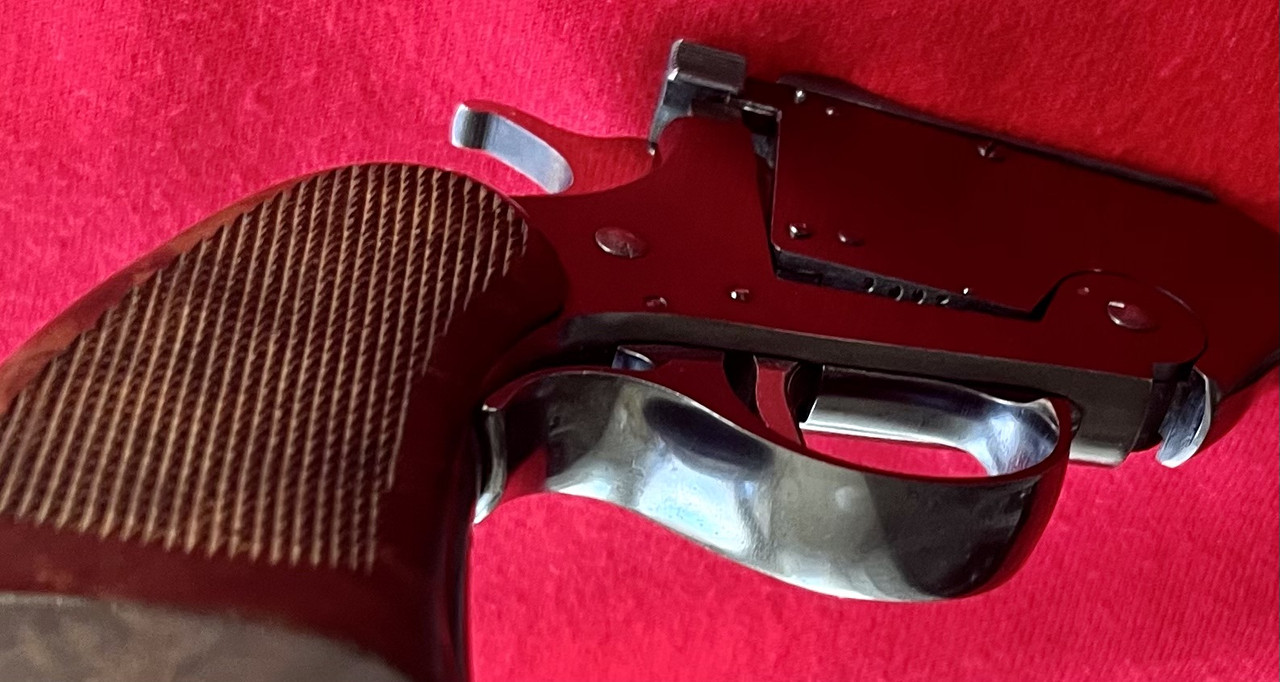
I know from a 2014 post I found on The Firearms Forum by a fellow who goes by "marxbites" that his USRA SN 29XX dates to 1937 per its accompanying test target.
My #2609 is lower by some 300 than the above 1937 gun, and some 700 lower than McCartney's 1940 gun. There are only 3328 guns known. (Now 3334, I think it is.) It seems to me that my #2606 gun could not have been made later than 1937, and more likely dates to 1935 or 1936. It has all of the eight attributes above said by McCarter to be indicative of a late 195.
What puzzles me is while we are told the USRA/195 was constantly evolving under Roper's guidance, 1930 - 1940, my SN 2606 also has all the above features.
Perhaps in the early years of Roper's involvement, say 1930 to ~1935, development/evolution was fast and furious, and in later years , say ~1935 to 1940, the evolution was essentially complete.




The late Richard Littlefield collected and researched the H&R USRA/195 extensively, and encouraged other collectors/owners to fill out a two-page survey on their gun's attributes in order for him to collect extensive information on the model. He had planned to write a book on the topic, but as far as I know he did not publish his research. I don't know if another collector now has his material.

Per Sean McCarter in an OGCA video "H&R Outshoots Everyone Else," available on YouTube, H&R Outshoots Everyone Else! | Expert Interview (OGCA): Episode 4 | Sean McCarter - YouTube, H&R USRA SN 3320, accompanied by a test target dated 1940, represents the pinnacle of the USRA's development because it has the following late model features:
• Heaviest barrel (slabside, 10")
• Later adjustable trigger screw (on front of trigger guard)
• Evolved (straight) trigger
• Heavier/bigger hammer
• windage adjustment screws on both sides where indicated
• Roper adjustable rear sight designed for consistent shadow regardless of sunlight conditions
• Rear sight vertical adjustment screw in indicated position on top strap
• Four-position group height adjustment screw at muzzle

I know from a 2014 post I found on The Firearms Forum by a fellow who goes by "marxbites" that his USRA SN 29XX dates to 1937 per its accompanying test target.
My #2609 is lower by some 300 than the above 1937 gun, and some 700 lower than McCartney's 1940 gun. There are only 3328 guns known. (Now 3334, I think it is.) It seems to me that my #2606 gun could not have been made later than 1937, and more likely dates to 1935 or 1936. It has all of the eight attributes above said by McCarter to be indicative of a late 195.
What puzzles me is while we are told the USRA/195 was constantly evolving under Roper's guidance, 1930 - 1940, my SN 2606 also has all the above features.
Perhaps in the early years of Roper's involvement, say 1930 to ~1935, development/evolution was fast and furious, and in later years , say ~1935 to 1940, the evolution was essentially complete.

Last edited:
AFAIK, this was not unusual. I seem to remember reading that "updating" older pistols was common.What puzzles me is while we are told the USRA/195 was constantly evolving under Roper's guidance, 1930 - 1940, my SN 2606 also has all the above features.
Sorry to hear of his passing.
- Joined
- May 16, 2005
- Messages
- 15,416
- Reaction score
- 37,488
Yeah, I agree, re updates being common, but...
The slabside barrel (which is integral to the top part of the frame), the screws in the frame, etc., are not parts which could be easily upgraded. Watch that video I linked to and see whatcha think.
Plus, there is so little, almost no, wear on the gun. My FFL ventured that he thought maybe it had never been shot.
I think it left the factory in its current configuration.
The slabside barrel (which is integral to the top part of the frame), the screws in the frame, etc., are not parts which could be easily upgraded. Watch that video I linked to and see whatcha think.
Plus, there is so little, almost no, wear on the gun. My FFL ventured that he thought maybe it had never been shot.
I think it left the factory in its current configuration.
- Joined
- May 16, 2005
- Messages
- 15,416
- Reaction score
- 37,488
i thought it would be useful to consolidate into this thread some of the disparate info on these guns that I have found scattered online.
This is a well-known article that is sort of, it seems to me, where everyone begins their study of the USRA model. The author, William McCarter, former president of the Ohio Gun Collectors Association, is the father of Sean McCarter, cited above in the YouTube link.




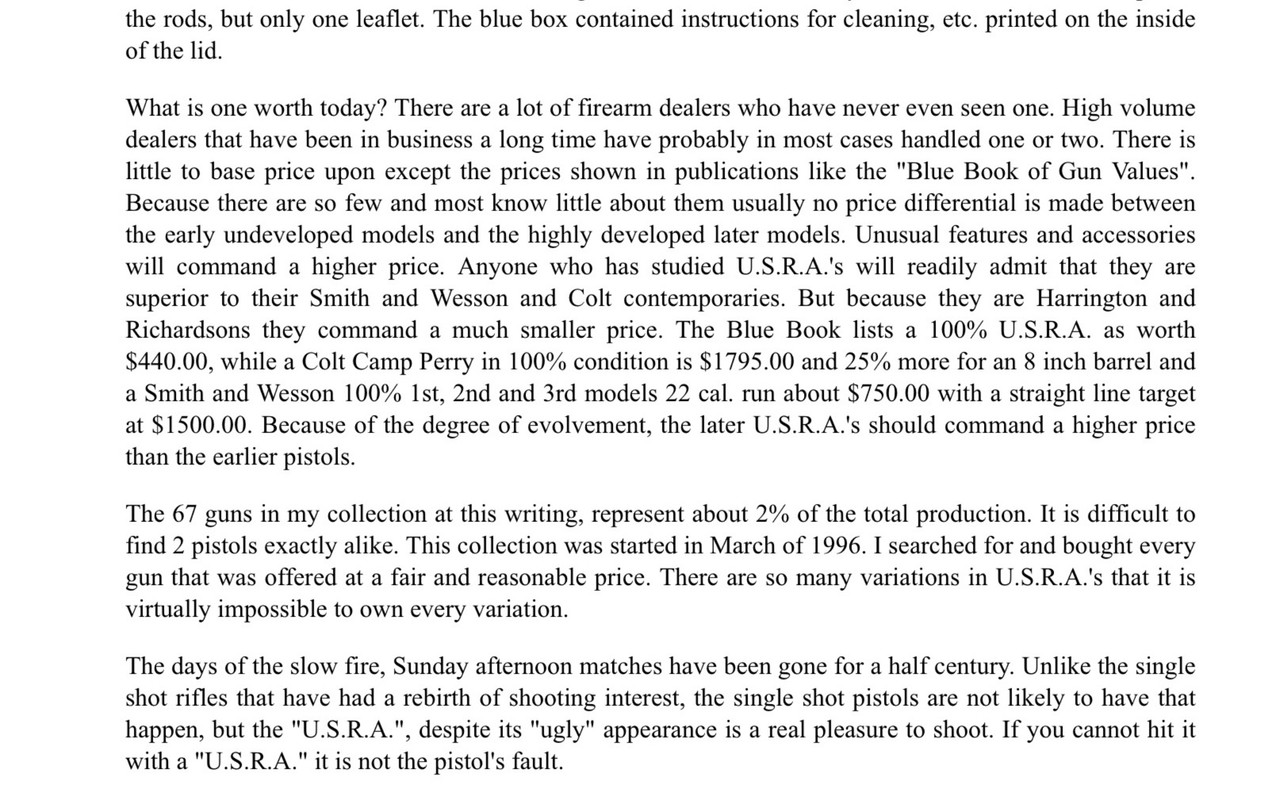
And here's a 2019 thread on USRAs from our own forum: I Love the H&R USRA
This is a well-known article that is sort of, it seems to me, where everyone begins their study of the USRA model. The author, William McCarter, former president of the Ohio Gun Collectors Association, is the father of Sean McCarter, cited above in the YouTube link.





And here's a 2019 thread on USRAs from our own forum: I Love the H&R USRA
Last edited:
- Joined
- May 16, 2005
- Messages
- 15,416
- Reaction score
- 37,488
USRA Article from December 1974 American Rifleman
Here's an excellent article — it is the best source of info on the USRA I have found yet — by M.D. Waite from the American Rifleman, December 1974.
Interestingly, it places Roper at Camp Perry in 1928 with the early version of the pistol in his hands.
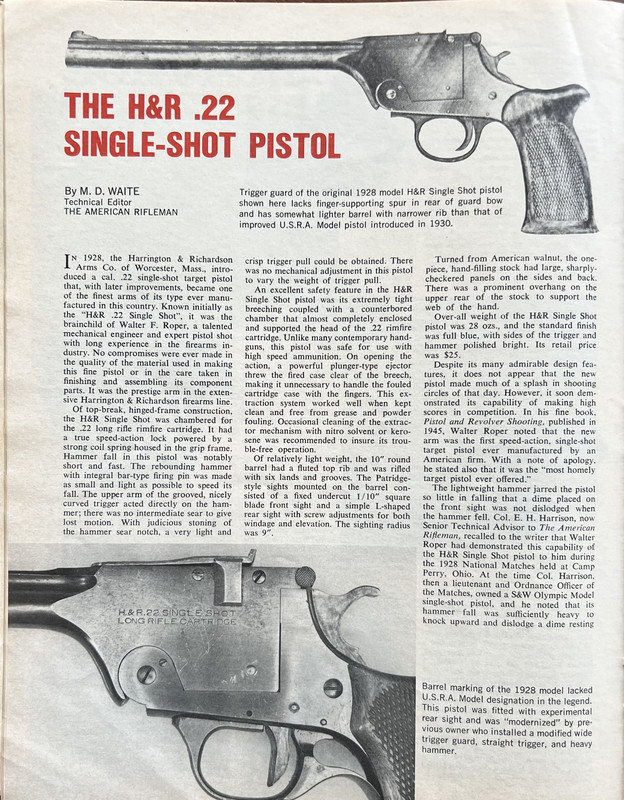


I think this article reinforces my surmise that the pistol was, largely, fully evolved by the mid 1930s. As it notes, development ceased in 1939.
(While Waite says high velocity .22 is okay for the gun, I have seen a photo, somewhere on the internet, showing a "standard velocity only" rubber stamped on the inside lid of a USRA box. Not that I see any point in shooting high velocity with this gun anyway.)
Here's an excellent article — it is the best source of info on the USRA I have found yet — by M.D. Waite from the American Rifleman, December 1974.
Interestingly, it places Roper at Camp Perry in 1928 with the early version of the pistol in his hands.



I think this article reinforces my surmise that the pistol was, largely, fully evolved by the mid 1930s. As it notes, development ceased in 1939.
(While Waite says high velocity .22 is okay for the gun, I have seen a photo, somewhere on the internet, showing a "standard velocity only" rubber stamped on the inside lid of a USRA box. Not that I see any point in shooting high velocity with this gun anyway.)
- Joined
- May 16, 2005
- Messages
- 15,416
- Reaction score
- 37,488
And here, courtesy of the NRA, is the article by W.D. Frazier from the March 1930 issue of The American Rifleman, and discussed above in the Waite article:

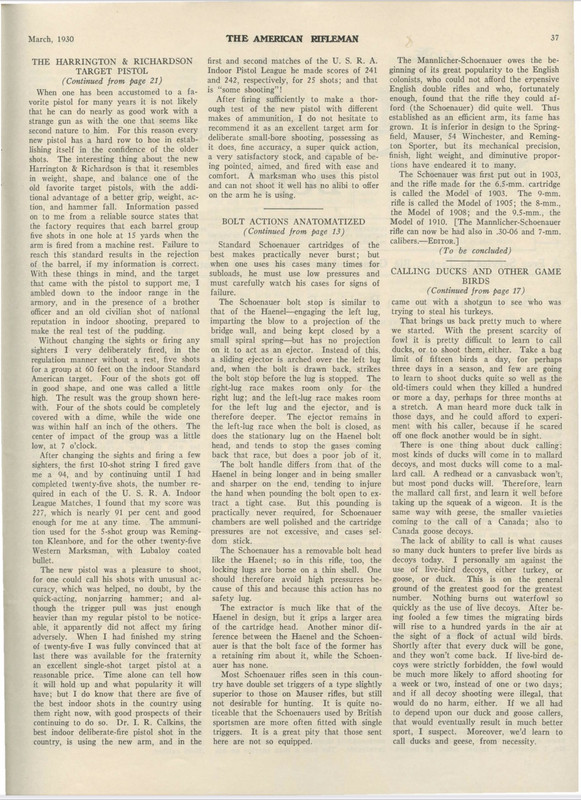
If anyone has access to the W.E. Goforth book, H&R Arms Co., 1871 - 1986, and could post for us the USRA article on page 137, it would be appreciated. (The book, where available, is quite expensive to purchase in order to read one article...)


If anyone has access to the W.E. Goforth book, H&R Arms Co., 1871 - 1986, and could post for us the USRA article on page 137, it would be appreciated. (The book, where available, is quite expensive to purchase in order to read one article...)
Last edited:
AJ
US Veteran
The LGS had this one in the shop. A friend bought it on his C&R. I got to shoot it before he took it home. Shot well. The trigger was about the finest that I have ever shot. Great target piece. If another shows up I will probably buy it.
Attachments
I have to recharge the battery on my seldom-used camera, so it will be tomorrow before I can attempt to copy the info in Bill Goforth's book. BTW, it is apparently nothing special, not much more than you will find in other sources. It starts on page 137.If anyone has access to the W.E. Goforth book, H&R Arms Co., 1871 - 1986, and could post for us the USRA article on page 37, it would be appreciated. (The book, where available, is quite expensive to purchase in order to read one article...)
Many thanks to you for posting the Rifleman articles, which I believe I have not seen before. The McCarter article, of course, is a classic.
Again, thanks for your posts!
I owned an H&R single shot U.S.R.A. 7" pistol for about a month. My plan was to shoot it in a heads up, side by side match with my 3rd model Perfected. I took it with me to the show last weekend to show to friends. A fellow who had just purchased a Kimball 30 carbine pistol came by and saw my USRA and wanted it real bad. He just enough money to talk me out of it. The match between the H&R and S&W did not happen.
Attachments
- Joined
- May 16, 2005
- Messages
- 15,416
- Reaction score
- 37,488
- Joined
- May 16, 2005
- Messages
- 15,416
- Reaction score
- 37,488
Last edited:
In case anybody's compiling serial numbers, here's one that sold (for cheap, I'd judge) a few years back: Harrington & Richardson U.S.R.A. Model Single Shot Target Pistol
Here's a rather fabulous example that sold at auction a couple years ago: Fine Alvin White-Engraved Harrington & Richardson U.S.R.A. Model Target Pistol with Original Box & Case
- Joined
- May 16, 2005
- Messages
- 15,416
- Reaction score
- 37,488
In case anybody's compiling serial numbers, here's one that sold (for cheap, I'd judge) a few years back: Harrington & Richardson U.S.R.A. Model Single Shot Target Pistol
Always bugs me when I see past auctions and amazingly low sold for prices. Makes me think I really need to learn to pay more attention!
(My life goal is to someday graduate from the buy high/sell low strategy of firearms acquisitions!)
This is a U.S.R.A. Single Shot Pistol", the U.S.R.A Model.
Built production 1928 ended in 1941 about 3300 pistols were produced. H and R hired Walter F. Roper (the grip guy), mechanical engineer and an expert pistol shot. He designed this series of pistol variations (this is a very late model). Today they are considered the finest single shot firearm ever built.
Not so sure about definitives like “finest” or “best”. Then again, International pistol shooting is almost unknown today in the USA.
Some might argue the point of "the finest single shot firearm ever built".]
Nice Morini!
Based on the 20 yd machine rest targets I’ve seen for the USRA, I doubt it could hold the 10 ring on the Int’l 50 Meter target. And, that’s not even taking into consideration the limitations of the sights and the lack of a set trigger.
The H&R USRA fizzled out being that it fit neither the American nor International directions for precision target pistol shooting.
It is what it is, working well enough for the US Revolver Association single shot match.
The American course of fire moved towards the National Match Course and eventually the “2700”. Well, you can’t complete five-shot strings of fire with a single shot.
As for the International 50 meter “free pistol” match, the USRA was woefully inadequate compared even to the free pistols of the 1930s, be they of the type Hatcher used (Luna, Buchel, Aydt system) or of the Martini types such as Hämmerli MP33 or Udo Anschutz model 210. The latter was used by Torsten Ullman (see image) for decades in multiple Olympic Games. He won the Gold in Berlin 1936.
If that name sounds vaguely familiar, he was featured in S&W advertising, having won many International Centerfire matches (a different course of fire than free pistol or American National Match course!) with a K-38.
After WWII, the Hammerli MP33 and 100 series free pistols dominated to the point where all three Olympic medals, Gold, Silver, and Bronze, were being taken with one.
Sadly, there’s not a single American made target pistol today that can compete in any of the International Pistol matches.
High Standard made the most headway, having developed successful Int’l Rapid Fire pistols and their short-lived electronic trigger free pistol, but that was back in the 1960s.
Kudos to them and the dedicated shooters who worked with them, like Franklin Green, Don Hamilton, and Bill MacMillan.
Today, America, or perhaps USA-Shooting (the US governing body for ISSF shooting disciplines) has simply given up on International pistol.
Not many people know this but last fall the World Cup was held. The United States came in second and third LAST place in 50 meter free pistol, despite the piles of money raked in by USA Shooting (including $$$ from excise taxes on YOUR guns & ammo!). The two team members couldn’t even break 500 points out of 600! By the last ten shot strings, the Americans couldn’t even keep their shots in the black. Beaten out by competitors from countries that don’t even have reliable running water or electricity! So much for the “Nation of Gun Owners”! Sad.
IMAGES:
1) check out Switzerland’s Moritz Minder and his 60 shot 50 Meter target, scoring 577/600! That’s from the World Cup in Seoul, Korea, 1978.
2) Torsten Ullman shooting his Udo Anschutz model 210, ca.1930s
3, 4, & 5) An example of the Udo Anschutz 210 free pistol. Compare this seriously to the USRA! In the 4th picture you can see part of the cocking lever that sets the trigger, a screw through the trigger blade that adjusts for the "touch" of the trigger finger, and a small screw behind the trigger to affect engagement between the trigger and the first transmission lever inthe set mechanism. The actual trigger weight is internally adjusted by a small wire spring. Trigger let-off can be adjusted between 15-100 grams. Note how there is a curved edge as part of the grip next to the trigger. Your finger relaxes very lightly, and a slight bend, touching the tip of the screw fires the shot. It is very precise but requires a cool nerve not to prematurely fire or get a wild shot.
I mention all this to give a larger context of understanding on the evolution of the pistol matches, and a better perspective on how the H&R USRA pistol fits in.
Sorry for the way-off digression!
Attachments
Last edited:
An early one that sold a couple years ago: Harrington & Richardson U.S.R.A./Model 195 Single Shot Pistol | Rock Island Auction
Similar threads
- Replies
- 24
- Views
- 8K
- Replies
- 207
- Views
- 39K
- Replies
- 5
- Views
- 1K
- Replies
- 12
- Views
- 3K
- Replies
- 12
- Views
- 429
Latest posts
-
FINLAND - The Winter War 1939 -> NATO member 2023 - general matter about Finland
- Latest: S&WshooterFIN
-
-
-
-
-
-
-
-
-
-



